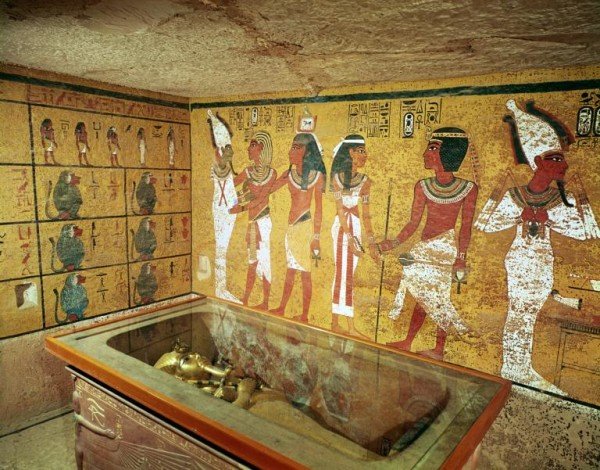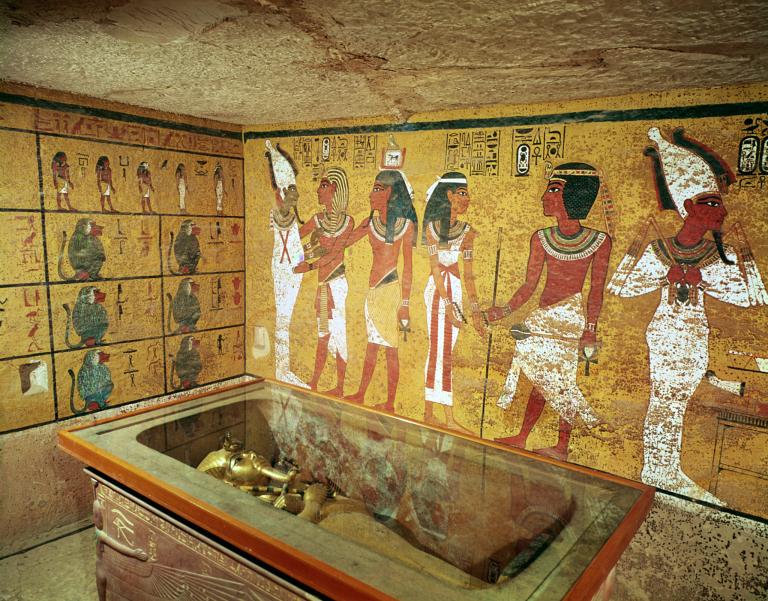Evidence grows for a hidden chamber in King Tutankhamun’s tomb, Egyptian officials say.
Experts say they are “90% sure” that there is a hidden chamber in the tomb.
Egypt’s Antiquities Ministry said it had carried out scans to gather more information about the theory.
Archaeologist Nicholas Reeves from the University of Arizona believes Tutankhamun’s remains may have been rushed into an outer chamber of what was originally Queen Nefertiti’s tomb.
The remains of Tutankhamun, who may have been her son, were found in 1922. He died 3,000 years ago aged 19.
At a press conference with the Egyptian Antiquities Minister Mamdouh el-Damaty on November 28, Nicholas Reeves said: “Clearly it does look from the radar evidence as if the tomb continues, as I have predicted.”
“The radar, behind the north wall [of Tutankhamun’s burial chamber] seems pretty clear. If I am right it is a continuation – corridor continuation – of the tomb, which will end in another burial chamber,” he said.
Mamdouh el-Damaty said the scans would now be sent to Japan for further analysis.
Dr. Nicholas Reeves developed his theory after the Spanish artistic and preservation specialists, Factum Arte, were commissioned to produce detailed scans of Tutankhamun’s tomb.
The scans were then used to produce a facsimile of the 3,300-year-old tomb near the site of the original Valley of the Kings in Luxor.
While assessing the scans last February, Dr. Nicholas Reeves spotted what he believed were marks indicating where two doorways used to be.
The archaeologist says he believes Nefertiti may lie inside.
Tutankhamun’s tomb was the most intact ever discovered in Egypt. Close to 2,000 objects were found inside.
However, its layout has been a puzzle for some time – in particular, why it was smaller than those of other kings’ tombs.
Dr. Nicholas Reeves believes there are clues in the design of the tomb that indicate it was designed to store the remains of a queen, not a king.
His theory has yet to be peer-reviewed and leading Egyptologists have urged caution over the conclusion.
